Latest Features
Grokking Lungfish’s Orca V6
Rebreather instructor trainer Dave Gration takes us for a dive into one of the newest breathers on the block, the Lungfish Orca V6, which attracted lots of attention at Rebreather Forum 4. Gration, who is a factory trainer for the unit reviews its innovative features including its compact, lightweight form factor, an adjustable counterlung, and reportedly, a proprietary fault-tolerant, gaseous CO2 sensor.
By David Gration. Images courtesy of D. Gration, RebreatherPro Training.
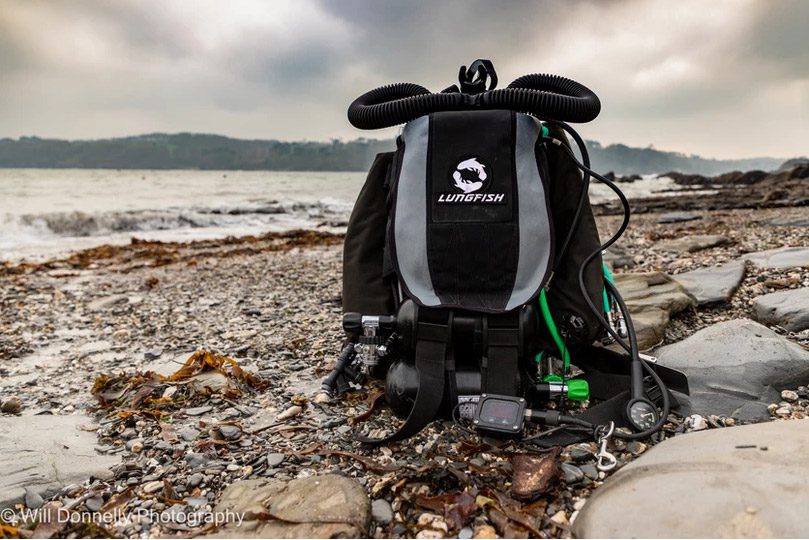
The Lungfish Orca V6 rebreather is the new kid on the block, which as I am writing this, is going through the final throes of CE certification after completion of all the practical tests. All the technical papers have been submitted. I’m happy to share what I’ve learned about it.
So, what makes it stand out from all those that came before it?
My first encounter with the Lungfish was back in 2016—it has actually been in development for a while. Dan Reynolds, who was one of the designers, showed me the unit and I made my first dive on it. My first impressions were that the designers were thinking outside the box with an innovative design that did not follow the norms for scrubber, counterlung and electronics that dominate the sport rebreather market.

The Lungfish is streamlined and lightweight. At approximately 20 kg/44 lbs when ready to dive, it is small and compact. It’s also versatile in configuration, robust, user friendly, has good work of breathing in any orientation, with a fault-resistant CO2 sensor. A unique feature is the ability to set the counterlung’s volume specific to the user in a matter of seconds, making for easy buoyancy control. This also means that the Lungfish is suitable for almost any size diver.
Let’s dig a little deeper…
- The overall dimensions are 60cm X 45cm X 20cm
- Travel weight of 12 kg/26 lbs and a ready to dive weight of approximately 20 kg/44 lbs
- The radial scrubber uses 2.3kg of CO2 absorbent
- Back-mounted counterlungs
- Standard three O2 sensors
- One gaseous CO2 sensor.
- Optional 4th independent O2 sensor
- Depth sensor 0-130 msw/424 fsw
- Electronic and manual PO2 control system as standard.
- Additional options include multiple isolated outputs to additional displays and computers, standard or wide-screen displays, multiple cylinder and gas supply configuration options.
- Optional “Alliance” full face mask with BOV
Having a low travel weight makes it a travel-friendly rebreather, and the head can easily go in your carry-on with the rest in cargo, leaving you with more room for your additional diving equipment. You can also take the complete unit in your carry-on.
The head of the Lungfish is where all the magic happens. It has been designed to prevent moisture from building up or covering the sensor dome. This has been achieved through the use of specific materials and positioning within the loop.
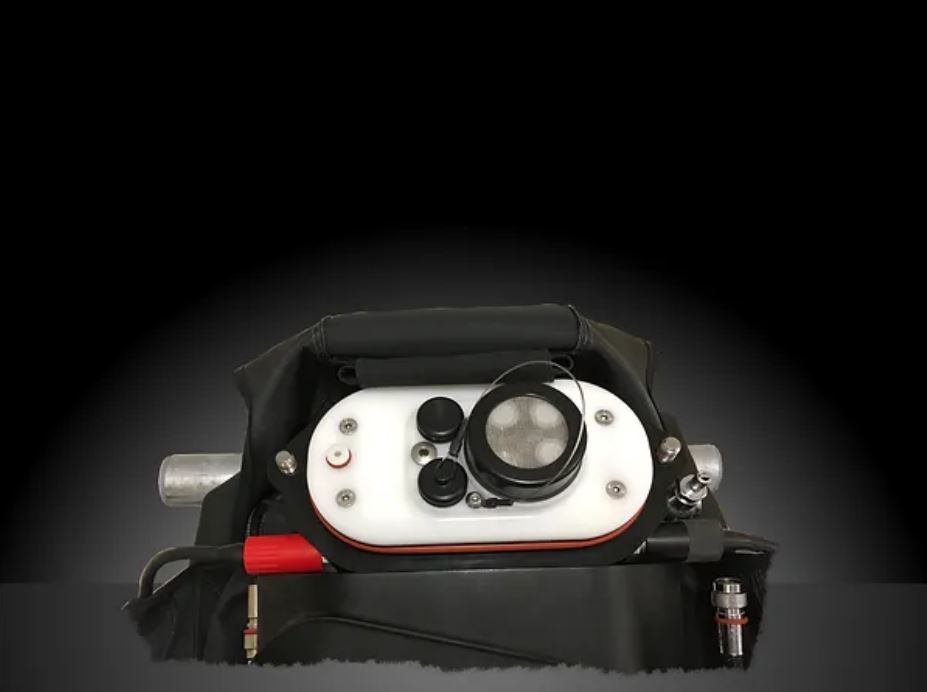
Sensors R US
It utilises three O2 sensors and a CO2 sensor as standard, with an optional fourth independent O2 sensor available, with an isolated electronics system which enables the main oxygen sensors to be read by up to two external computers or PO2 monitors with full redundancy. The unit is fitted with its own proprietary handset (available in two screen sizes).
The handset has a unique status light system which can be seen from any angle and can be observed from a distance by a dive buddy. The display is easy to read, with key information on display.
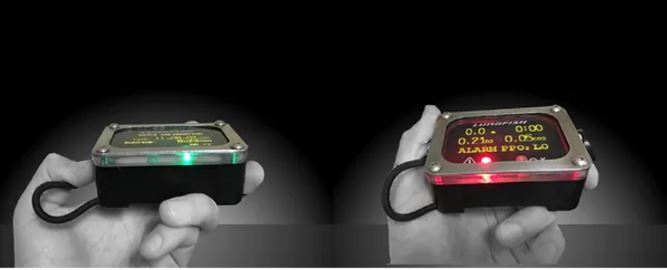
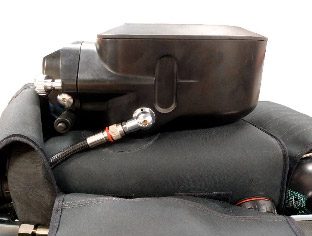
The back-mounted counterlungs are positioned slightly differently than other rebreathers. They are sandwiched between the backplate and the scrubber canister, then enclosed in an adjustable back-pack design which enables divers to set their counterlung’s volume specifically for them. When diving the Lungfish, the counterlung’s position between the backplate and scrubber gives good work of breathing in any orientation. This feature will make it appeal to photographers or videographers positioning themselves to get the perfect picture, like the photographer in near vertical trim shown in the image below. Moving through the water with the Lungfish feels very much like diving open circuit scuba with a 12L cylinder.
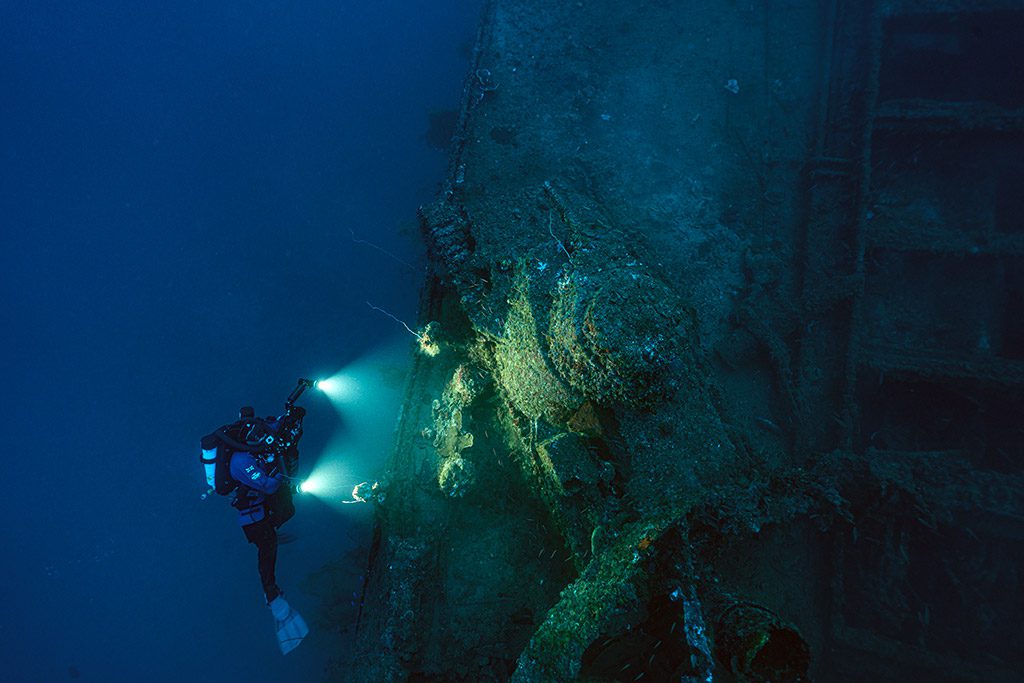
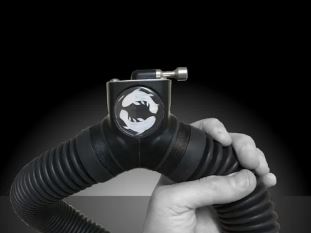
Another unique component of the Lungfish is the size and design of the diver surface valve (DSV). The drop-away hoses are designed for both better all-round vision as well as to reduce jaw fatigue. With single-finger lever operation, from either hand,the lever clearly shows the position of the DSV when it is in the diver’s mouth. It has a wide bore design giving maximum gas flow and minimum dead airspace.
There are no counterlung tee pieces on the shoulders that could restrict movement of the head, neck and upper body. The plate on the top of the DSV comes with attachment points for a rebreather safety strap (gag strap), which is included. The streamlined and compact design allows divers to pass through small restrictions in a cave or wreck, with no noticeable increase in work of breathing, even when you are upside down.
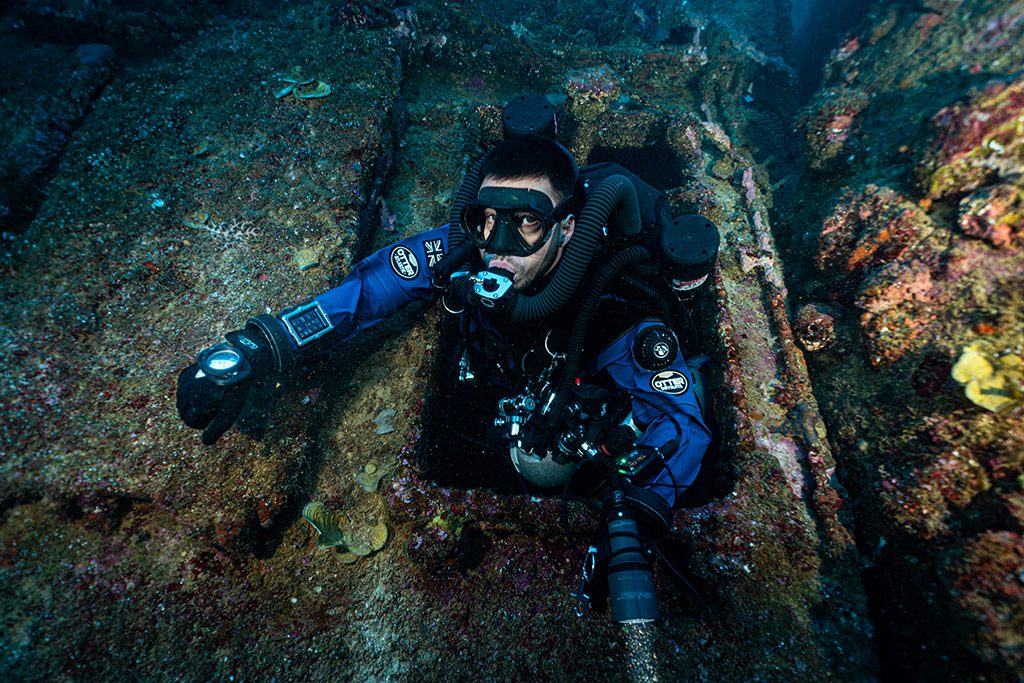

The automatic diluent valve (ADV), is mounted on the top of the unit, connecting to the left port of the inhale counterlung with a Dräger connector, a standard diaphragm design. The overpressure valve (OPV) is located at the bottom of the exhale counterlung and is easily located via a short string and toggle, a similar design to a standard BCD dump, but with a non-return valve to prevent water from entering the counterlung when operated.
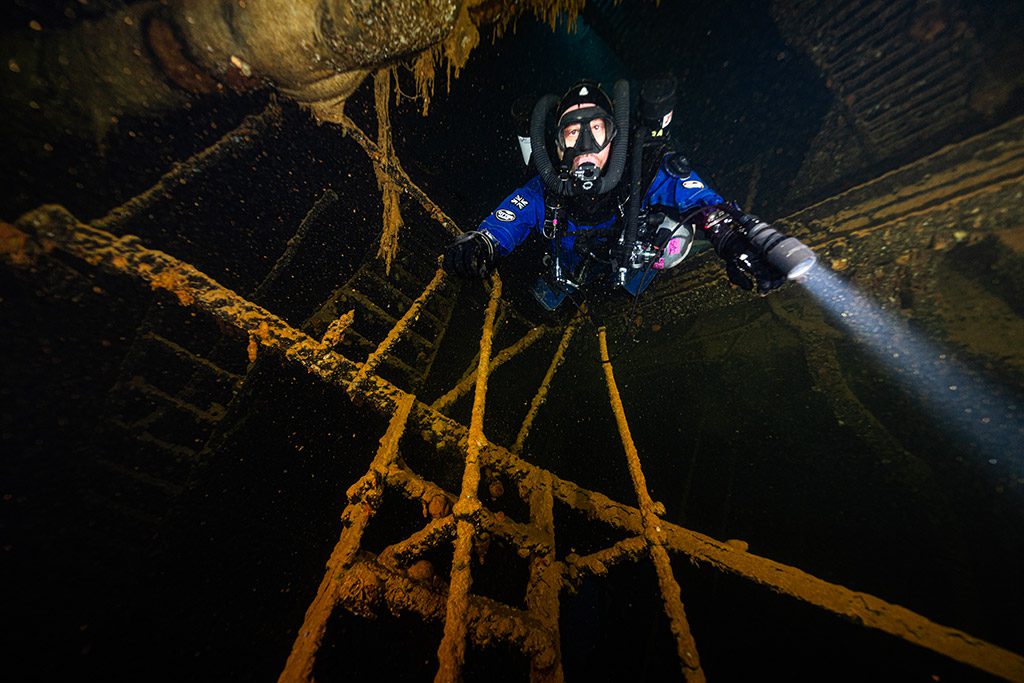
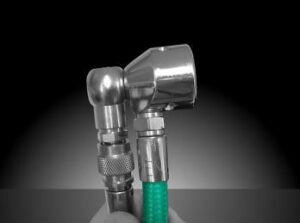
Continuing with the theme of thinking outside the box, the manual addition valves (MAV’s) have been optimised for size and usability. The buttons are protected by the shroud of the external part of the MAV, preventing accidental button pressing. There are few component parts and o-rings, reducing the potential of failure. The body of the valve can be swivelled through 360º to allow easy connection of an external offboard gas. There are multiple configuration options for the MAV’s including over the shoulder, under the arm, integrated with BCD inflator or mounted on first stages.
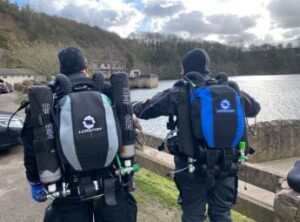
For versatility, the onboard/offboard cylinder configuration possibilities are numerous, whether you want a traditional 3L cylinder on either side of the unit or the standard Lungfish 2L cylinders positioned below the scrubber.
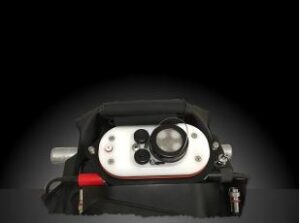
There was talk at the Rebreather Forum 4 about the Lungfish’s proprietary fault-resistant CO2 sensor, which is located next to the oxygen sensors in the head and protected by the sensor dome cover. Though how it works is a closely-guarded secret, Lungfish claims that the sensor correctly distinguishes CO2 from water vapour/moisture or other gases in the loop eliminating false alarms and or false positives. [Ed. note: Lungfish has not specified the sensing technology they are using]
Does it work?

Putting it to the Test
On a recent trip to Truk Lagoon, I tried everything possible to make it give a false positive. This included making three dives in a day, without removing the head between dives, leaving it in the baking hot sunshine between dives on the swim step, all of which should have increased the presence of water vapour in the loop. The unit did not once give a false positive. Then at the end of the day when the head was removed, immediately blowing gently over the sensor, without it being able to dry out, resulted in a rapid increase on the PCO2 display.
Some will argue that the location of the sensor is not perfect and that CO2 should be measured on the inhalation side of the mouthpiece. Ideally, that might be the case, but the more important issue is accuracy and the absence of false negatives or positives.
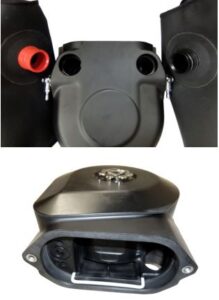
The assembly and disassembly of the Lungfish is user friendly, with only a few O-rings to maintain and a simple process of attaching the counterlungs to the scrubber canister and securing with a clip (seen in the lower image).
The MAV feeds and solenoid feed hoses are quick release and are connected directly to the main body of the scrubber housing and head (seen on the image). This also means disinfecting the whole system is easy, as the counterlungs can be removed quickly.
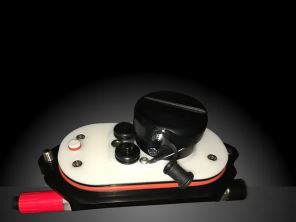
Calibration is by way of a calibration cap which covers the sensor dome, then connects to a low-pressure hose from an oxygen cylinder. This allows the diver to be in control of when to complete the calibration process.
It’s also possible to press down firmly on the calibration cap, which will increase the pressure below it, which in turn increases the oxygen sensor MV output. This is shown on the screen and a great way of seeing the performance of the oxygen sensors prior to entering the water.
With the present version of the software, a computer is required to change the percentage of oxygen used for the calibration of the oxygen sensors. However, Lungfish plans to add this to the handset and app in future versions of the software.
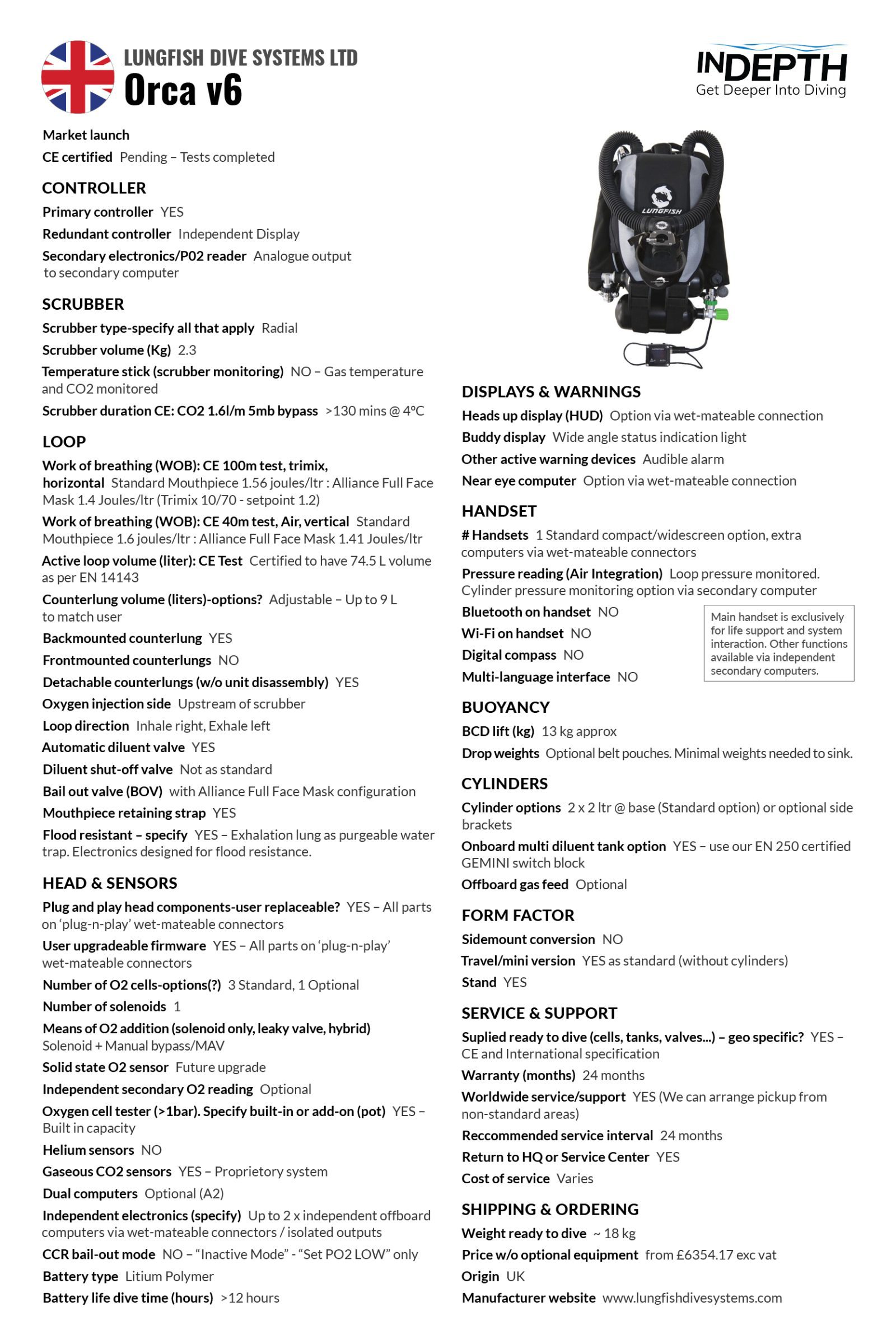
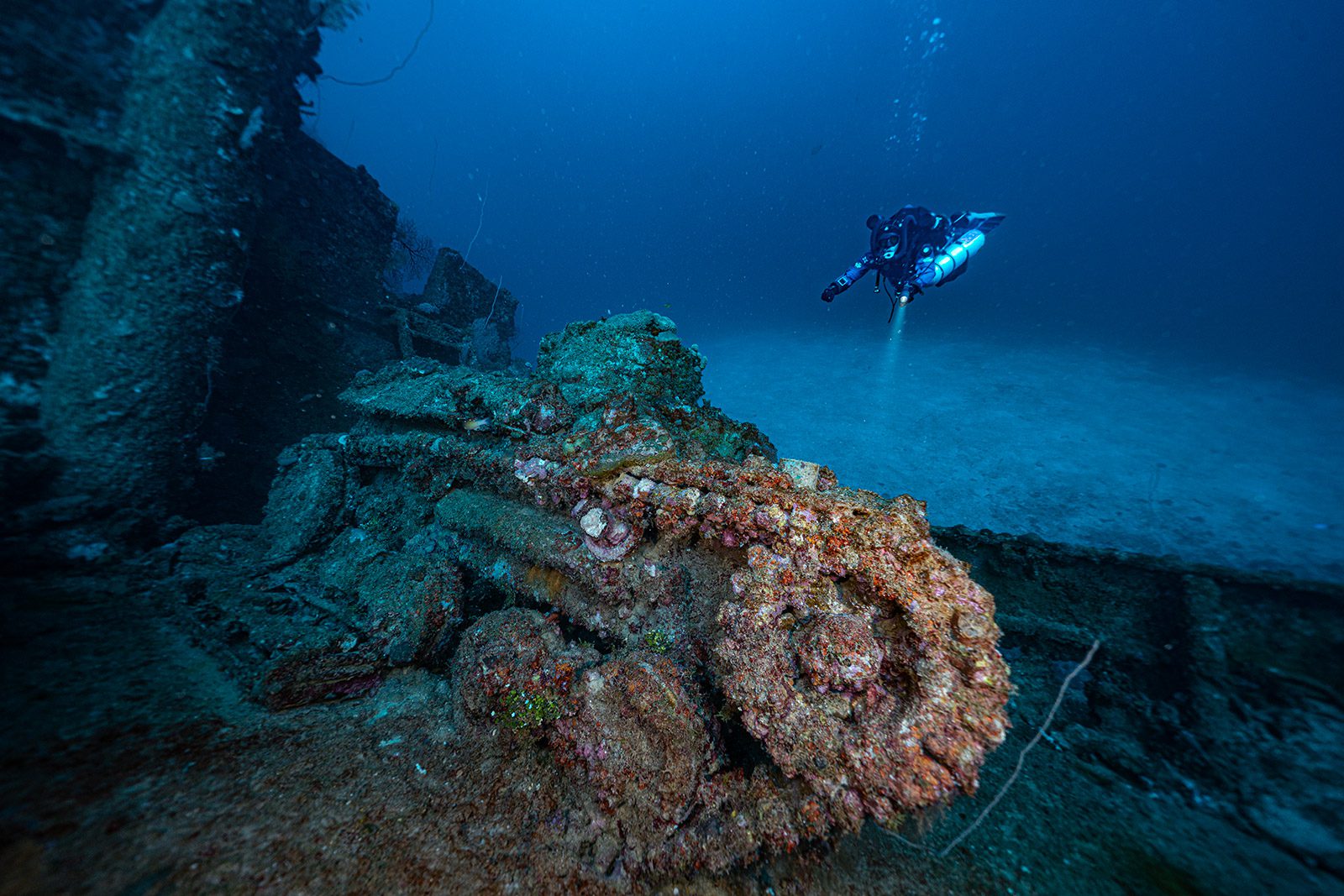
To summarise, no matter what size of diver you are, if you are looking for a lightweight, compact rebreather, that is easy to use and suitable for all kinds of diving, you won’t go wrong with Lungfish’s new Orca V6.
DIVE DEEPER
InDEPTH: InDEPTH’s Holiday Rebreather Guide 2023
Alert Diver: Do You Know What You’re Breathing? by Michael Menduno
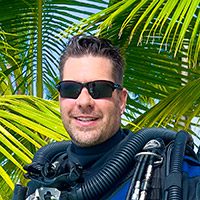
Dave Gration has been diving since his early teens. Now with over 36 years of experience in the diving industry, he is still as passionate about diving as he was when he first ventured underwater. Dave works full time as a Diving Safety Officer, Rebreather Instructor Trainer, and Equipment Specialist/Advisor. He is best known for his work on deep archaeological projects, which have pushed boundaries in utilizing rebreather technologies in the field. Dave teaches on a number of different rebreathers on the market today and is a factory approved Instructor Trainer on the Lungfish Orca V6.






















































